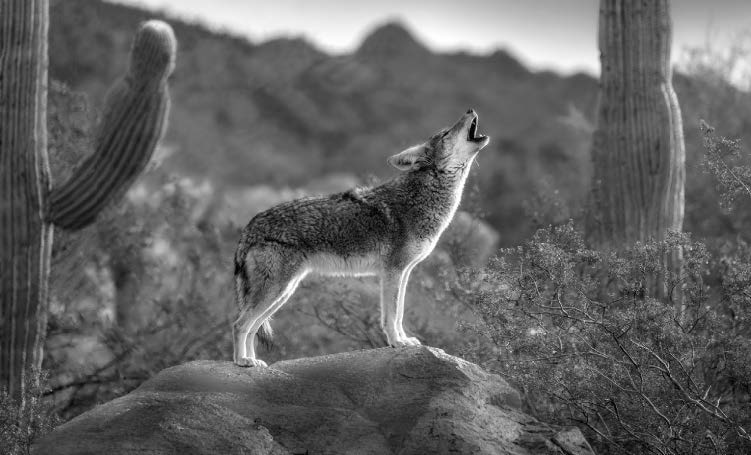
Photo: Jay Pierstorff/Getty Images
Coyotes
European colonists were familiar with the wolf and fox, but the coyote remained unknown until Meriwether Lewis (of Lewis & Clark fame) described him on the Great Plains in 1805. With deforestation and the loss of large predator competition, coyotes greatly expanded their range to fill the continent from coast to coast, even into urban areas. Experts can not even estimate the size of the current huge population.
Mating pairs often form lifelong bonds and may live in small family groups or packs. They have a large vocal repertoire and use howls to create social bonds and warn others off their territory. There are regional size differences between the smaller southwestern coyotes and their larger Eastern counterparts. Eastern coyotes possess small and varying amounts of wolf and dog DNA.
Most active at night and early morning, coyotes can habituate to human presence and food sources, although 90 percent of their diet is small animals, insects, fruit, and carrion. Coyotes are the most common farm and ranch predator, responsible for half of all young livestock deaths due to predation. They also pose a threat to poultry, rabbits, and small pets. Coyotes consume garden crops, pet food, and garbage. Normally shy and reclusive, coyotes are most commonly encountered near open recreation land.
SIGNS OF A VISIT
• Feces are similar to dog scat but may include hair, feathers, bones, fruit, or seeds. • Paw print is tighter and more oval than that of a dog.
• Prey are attacked with a bite to the top of head, throat, or back.
• Small animals go missing.
• Only one or two animals in a group killed.
TO DETER
• Persistently "haze," or frighten away.
• Walk dogs on a short leash to prevent an attack on the dog.
• Protect small animals and pets left alone in yards.
• Use livestock guardian dogs for stock protection. (continued)
• Cut down tall grass areas.